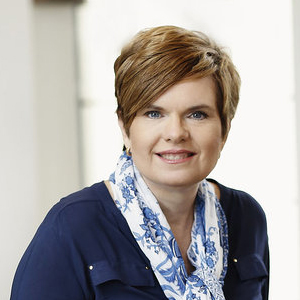
Is Bigger Always Better?
There are at least 20 high school stadiums in America with a seating capacity between 10,000 – 21,000. Thirteen are in Texas, four in Ohio. You could even say there’s a football stadium competition going on in Texas. The McKinney School District is building a new $70 million football stadium that will seat 12,000 and the next school district over has a $60 million stadium that seats 18,000.
As a booster-club-backer, I was relieved to learn that these stadiums are funded by tax-payer approved bond packages rather than placing the fundraising burden on the backs of volunteer parent athletic boosters. The conversation about these huge stadiums though made me wonder about whether bigger is necessarily better.
For example, how do these school districts with jumbo-tron-sized stadiums avoid Title IX claims? All federally funded schools must comply with Title IX and its equal opportunity provisions. Although Title IX doesn’t require a dollar-for-dollar match in spending on male and female sports, schools must show that there are similar opportunities for boys and girls including similarity in the quantity and quality of equipment provided, the financial support for travel, fairness in assigning and paying quality coaches, and equal facilities, such as locker rooms, fields and arenas.
Schools routinely have to deal with the balance getting tipped when, for example, a volunteer athletic booster club makes a large donation to enhance a male-sport-facility and the school doesn’t ensure that equal facilities are available for girls’ sports. When you have multiple schools in a school district sharing a huge mixed-use facility (some stadiums accommodate 7-8 high schools for football, soccer, lacrosse, and band competitions), this becomes even more complex to track.
Huge stadiums have been a part of the American high school landscape for over a century. Stadium Bowl (capacity 15,000) was built in 1910 in Tacoma, WA; Fawcett Stadium (capacity 22,400) in Canton, OH was built in 1938. In fact, half of the 20 largest stadiums I looked at were built in 1940 or before. But in this day of Title IX considerations and asking the same people who pay for the stadium to also contribute to the booster club’s fundraisers just makes me wonder, is bigger always better?
The only organization of its kind in the US, Parent Booster USA is about helping school support organizations (parent teacher organizations, high school booster clubs and other school fundraising groups) handle the state and federal government paperwork required of fundraising groups.
Founded in 2004 by an attorney skilled in nonprofit and tax law, Parent Booster USA has more than 6,000 member organizations in 50 states and DC with a 95% annual renewal rate. We provide peace of mind for parent volunteers, school administrators and school district leadership.
